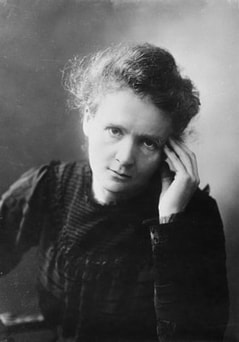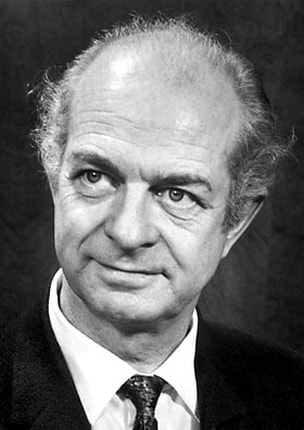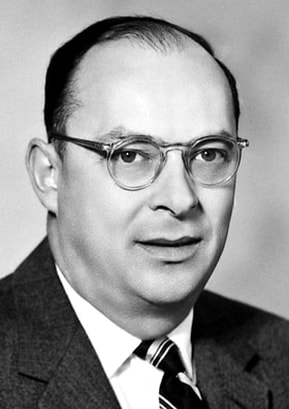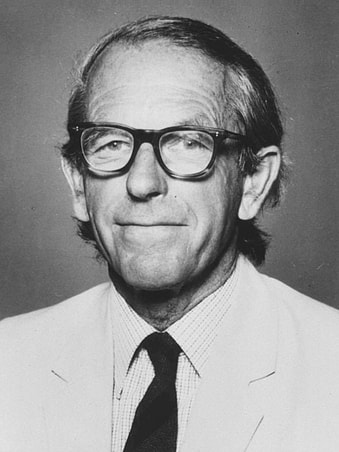|
Winning the Nobel Prize is a crowning achievement for any scientist. It is recognition that said scientist has had a real world impact and made a major contribution to the advancement of knowledge. Nevertheless, there are some drawbacks to winning the Nobel Prize. Upon reading this, some scientists would reply, “Oh, yeah? Just try me!” I know. I know. Most scientists would rather have a Nobel Prize than not. But one of the problems with a Nobel Prize is the perception that it represents the peak in a scientist’s career, and that from there on it’s mostly a downhill ride. Now, don’t get me wrong. Most scientists remain active in research and make many important contributions after winning a Nobel Prize. But the majority of scientists remain active in the field in which they won the prize, as opposed to switching to a different field and making a new discovery. Therefore their work after winning the prize is often perceived to be the fill-in work by individuals engaged in an activity characterized by diminishing returns. It is difficult to shake off the notion that, if you’ve won a Nobel Prize, you are a “has been” whose future work will never reach the level achieved by your earlier work. However, what if you won a second Nobel Prize? Now, that would be something, wouldn’t it? It would very clearly convey the message that you’ve still have “IT”. So has anybody achieved this feat? In the 119 years during which the Nobel Prizes have been awarded, only four individuals have achieved this.  Marie Curie Marie Curie Marie Curie Marie Curie was a Polish-French physicist and chemist who, along with her husband, Pierre Curie, performed important work in the emerging field of radioactivity. For this work they shared the Physics Nobel Prize in 1903 with another pioneer in radiation studies, Henry Becquerel. Interestingly, and reflecting the prejudice of the times, the French Academy of Sciences was considering only nominating her husband and Becquerel for the award, but Pierre Curie complained that her contribution was also important, and they were both nominated and won. Marie Curie won a second Nobel Prize, this time in chemistry, in 1911 for her work in discovering the new elements Radium and Polonium (her husband had died in an accident in 1906). She is so far the only woman to have earned two Nobel prizes, and only one of two persons who has earned the prize in separate disciplines. It should be mentioned here that Marie’s daughter, Irene Joliot-Curie, along with her husband Frederick won the Nobel Prize in 1935 in chemistry for their synthesis of new radioactive elements. This makes the Curies the winningest family when it comes to Nobel Prizes, with a total of five!  Linus Pauling Linus Pauling Linus Pauling Linus Pauling was an American chemist and biochemist who performed important work in the structure of biological molecules and the nature of the chemical bond. For his work he was awarded the Nobel Prize in chemistry in 1954. Pauling remained active in this area, but his concerns regarding the proliferation of atomic weapons led him to spearhead a movement to reduce the number of atomic weapons and ban their testing. For his activism, Pauling was awarded the Nobel Prize in Peace in 1963. Pauling was the second person (after Marie Curie) to win two Nobel Prizes in different disciplines, but in his case he was the sole winner. He did not share his prizes with anyone!  John Bardeen John Bardeen John Bardeen John Bardeen was an electrical engineer and physicist who with Walter Brattain invented the transistor while working at Bell Labs in 1947. This invention caused a revolution in the field of electronics and made possible most modern electrical devices that we use today. For their work, Bardeen and Brattain were honored with the Nobel Prize in physics in 1956, which they shared with William Shockley. However, after Bardeen left the emerging transistor field, he developed, along with Leon Cooper and John Schrieffer, a theory to explain the phenomenon of superconductivity (commonly called the BCS theory), for which all three were awarded the Nobel Prize in 1972. In this way, Bardeen became the first individual to receive the Nobel Prize for work carried out in two fields of research within the same discipline!  Frederick Sanger Frederick Sanger Frederick Sanger The British biochemist, Frederick Sanger, was the first person to sequence and determine the structure of the very important protein hormone, insulin. This achievement not only revolutionized the study of proteins but also paved the way for the production of synthetic insulin. For this achievement he received the Nobel Prize in chemistry in 1958. Sanger then, focused his energies on DNA, the molecule that carries the instructions to produce living things. He devised methods to determine the long sequences of this molecule, and this achievement led to the determination of sequences of DNA and related molecules from many organisms including humans, as well as to the identification of the DNA changes underlying genetic diseases. Sanger’s methodological contributions also served to launch the modern disciplines of molecular biology and biotechnology. For these achievements, Sanger received again the Nobel Prize in chemistry in 1980, which he shared with Paul Berg, and Walter Gilbert, thus becoming the second person ever to have received two Nobel Prizes in the same discipline. No one has won two Nobel Prizes since Sanger in 1980, and no one has won them in the discipline of physiology and medicine. Similarly, no one has won three Nobel Prizes (and some people would argue that the human lifespan and the dynamics of Nobel Prize worthy achievements are such that this is impossible). So far, Marie Curie, Linus Pauling, John Bardeen, and Frederick Sanger represent or are very close to the peak performance attainable by the human mind in the field of science. After winning their first Nobel Prize, these people proved to the world that they still had “IT”! The 1911 photograph of Marie Curie published in 1912 in Sweden (Generalstabens Litografiska Anstalt Stockholm) is in the public domain. The 1962 photo of Linus Pauling and the 1955 photo of John Bardeen by the Nobel foundation are in the public domain. The NIH photo of Frederick Sanger is in the public domain.
0 Comments
Your comment will be posted after it is approved.
Leave a Reply. |
Details
Categories
All
Archives
June 2024
|
 RSS Feed
RSS Feed